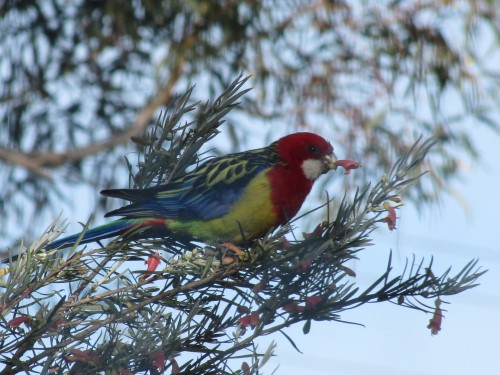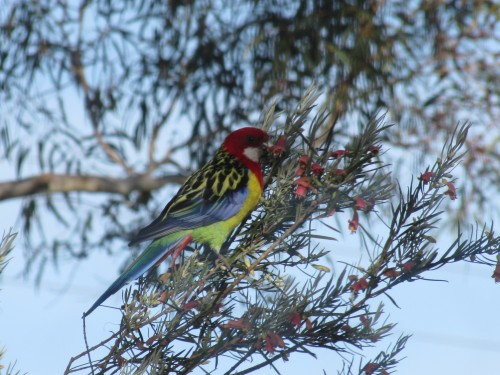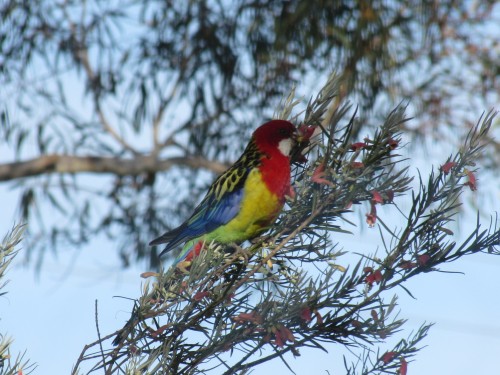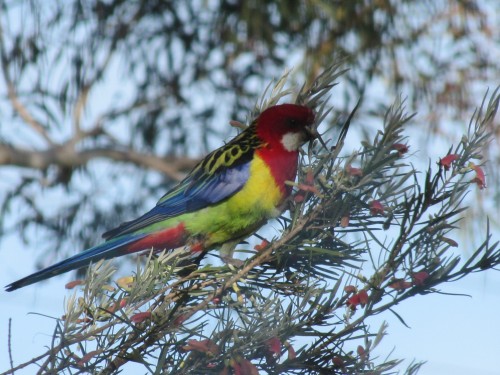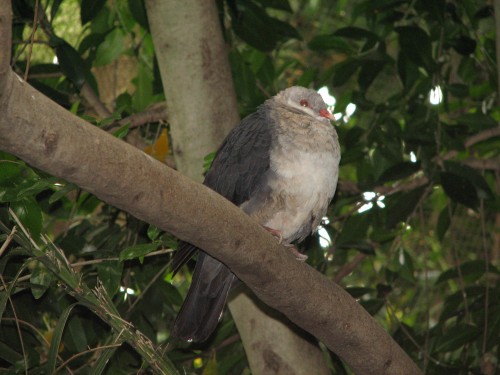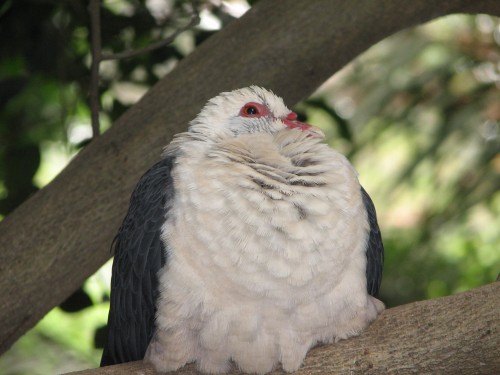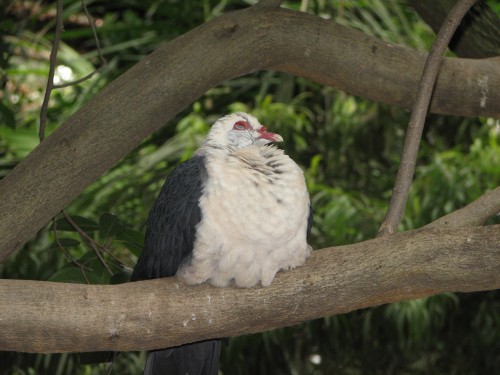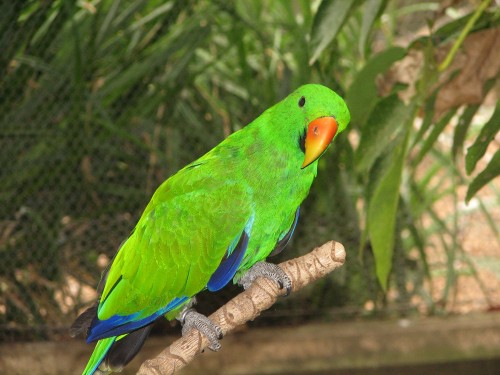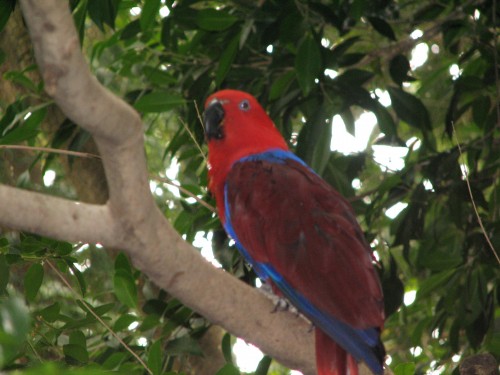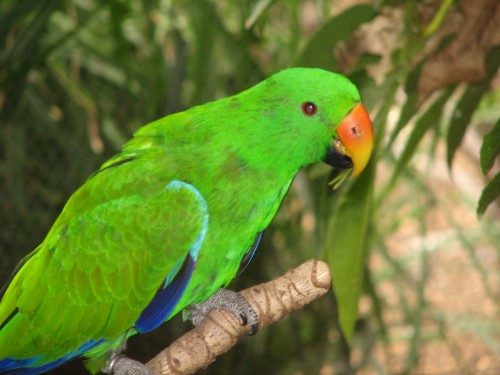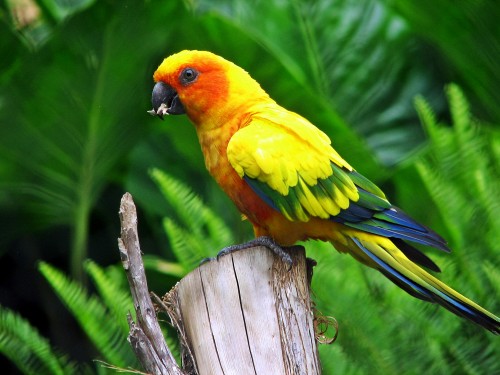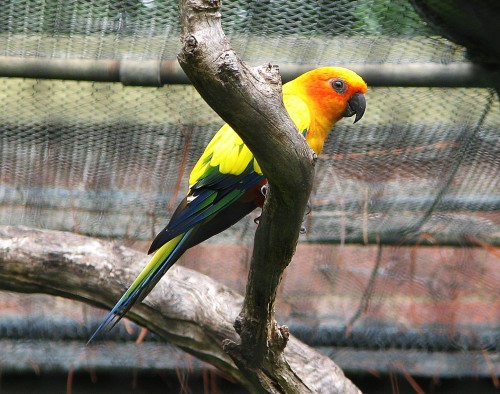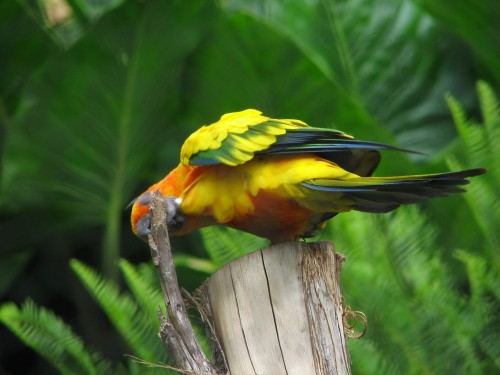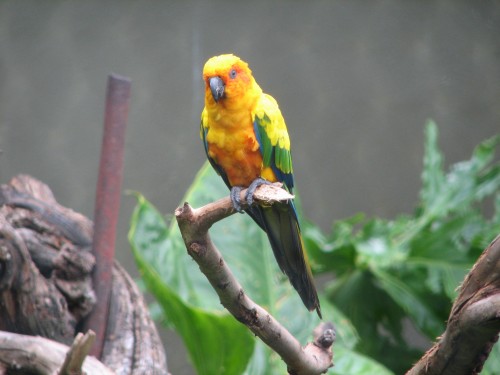Now the Eastern Rosella is back home
For almost two years now we have had an Eastern Rosella occasionally visit our garden and patch of mallee scrub. During some weeks we see it several times a day, every day. On other occasions it may only visit once and then not again for a week or two. It is an unusual visitor for a number of reasons.
- Eastern Rosellas are not normally found in the Murray Bridge region. They are common in the eastern states and even in the south east of South Australia. They have been introduced to the Adelaide region. All I can assume is that this species is extending its range or this one bird has escaped from someone’s aviary – or has been released.
- The other unusual matter relates to its behaviour: it is regularly seen in the company of a Mallee Ringneck. We have up to a dozen ringnecks around at any one time, but most of them do not tolerate this “interloper” and will vigorously chase it off. It keeps returning; such persistence.
For the last month we hadn’t seen the rosella, but earlier this week it reappeared, again in the company of a ringneck and again being harassed by the other ringnecks. On Wednesday it posed nicely for my camera while eating the flowers of one of our Eremophila youngii bushes.
Further reading:
- Now we have two Eastern Rosellas
- Adelaide Rosellas in our garden
- Mallee Ringneck Parrot
- Parrots eating our flowers
- Eremophilas – articles about Eremophilas on my wife’s site.
Our wrens are back!
Our wrens are back!
When I say “our”, I mean the family of Superb Fairy-wrens who have decided to call our garden their home. Ever since we got back from our recent trip to visit family in Sydney we haven’t seen or heard them. That’s nearly a month and we missed not having them around.
This morning, while having breakfast in our sun-room, we saw two of them fussing around in the bushes near the bird bath. Both of them briefly visited the water for a quick drink. One was an uncoloured male and the other a female. Originally we only had two, a male and female. Then last year a third one joined them; we assume that they had nested and the third one was their offspring.
Now where have they been for the last month or so? In fact, thinking about it, we haven’t heard or seen them since well before we left for Sydney about 7 weeks ago. Have they been quietly nesting somewhere? And if they have been breeding, how many in their family group now? I guess time will tell.
Meanwhile we are looking forward to their cheerful trilling as they feed in the garden and nearby mallee scrub. And we also enjoy seeing them hopping and flitting around as we go about our daily tasks.
The photo of a fully coloured male above was taken in our driveway earlier this year.
White-headed Pigeon, Adelaide Zoo
One of the walk through aviaries at the Adelaide Zoo has quite a large collection of pigeons, including these White-headed Pigeons. I have visited this aviary on many occasions and usually many of the pigeons are actively scratching around in the dirt on the floor of aviary or feeding from one of the feed trays. Usually, however, some of the birds prefer to just sit on a branch of the many trees growing inside the large cage.
The bird above looks cold, huddled on the branch like that. If my memory is correct it was actually quite a warm day; it certainly was in mid-January, one of our hotter months. Looking carefully at the bird above, however, it appears to be a juvenile. On almost every visit to this aviary I’ve several pigeons, this species included, either making a nest or sitting on eggs. If, as I suspect, it is a recently fledged bird, it would explain why it is all fluffed up like that.
To read more about this species and to see better photos I have taken click here.
Eclectus Parrot, Adelaide Zoo
In today’s post I feature several photos of the male and female Eclectus Parrots. This very colourful species of parrot is found in the northernmost parts of Queensland. It also inhabits eastern Indonesia, the Solomon Islands and Papua-New Guinea to the north of Australia.
These birds were photographed in a walk through aviary in the Adelaide Zoo, South Australia.
Sun Conure, Adelaide Zoo
Sun Conures (also called Sun Parakeet) are native to north-eastern South America. They are spectacular in their bright colours and it is not surprising that they are a popular aviary bird.
The birds shown in today’s photos are a part of the wonderful collection of birds in the Adelaide Zoo in South Australia. The zoo has a very strong collection of Australian birds with a small selection of non-Australian birds as well.
I am quite pleased with the photos shown today, taken as they were through the wire netting of the aviary.
You can read about another species of conure in the zoo, the Brown-throated Conure, by clicking here.
